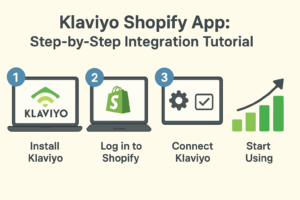- Outcome-Driven Ad Experiences (ODAX): A Quick Overview
- All Facebook Ad Objectives and What They Mean
- Know Your Business Goals
- Best Ad Objective for Sales
- How to Choose an Objective – With “Sales” as an Example
- Importance of Event Tracking for Ads with Sales Goals
- How Your Ad Budget Setup Determines Your Sales Success
- The Link Between Ad Targeting and Sales Performance
- Conclusion
Have you ever launched a Facebook ad campaign and felt unsure whether you chose the right objective? You’re not alone. Choosing the wrong objective can lead to poor performance, wasted budget, and little to no return on ad spend—especially when your goal is sales.
For direct-to-consumer brands and performance marketers alike, selecting the correct Facebook ad objective is the foundation for success. Meta’s advertising platform is powerful—but only when configured properly. With the right setup, you can build a full-funnel strategy that consistently drives conversions.
In this guide, we’ll break down how Meta’s ad objectives work, the meaning behind each one, and how to use the “Sales” objective strategically to maximize your ROAS (return on ad spend).
Outcome-Driven Ad Experiences (ODAX): A Quick Overview
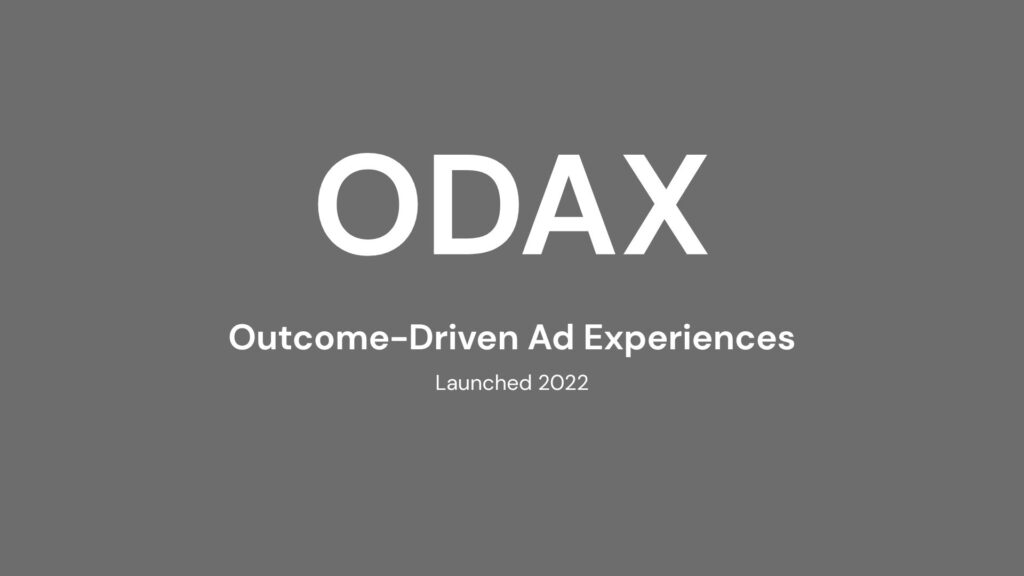
In 2022, Meta streamlined its ad objectives to reflect a more outcome-focused framework, called ODAX (Outcome-Driven Ad Experiences). ODAX reorganized campaign objectives into six core buckets:
- Awareness
- Traffic
- Engagement
- Leads
- App promotion
- Sales
Rather than overwhelm advertisers with a long list of legacy options, Meta now encourages marketers to think in terms of outcomes. Do you want to increase brand awareness? Generate leads? Drive purchases? Each objective is optimized by Meta’s machine learning to deliver that specific result.
All Facebook Ad Objectives and What They Mean
Here’s a high-level breakdown of what each ODAX objective is designed to accomplish:
- Awareness: Reaching people most likely to remember your brand
- Traffic: Sending people to a website or app
- Engagement: Boosting post interactions, video views, or messages
- Leads: Capturing email addresses or contact info
- App Promotion: Driving app installs and usage
- Sales: Getting purchases, sign-ups, or conversions
Stat to Note: Campaigns that match objectives to the right funnel stage can see up to 2X higher conversion rates, according to Meta internal data.
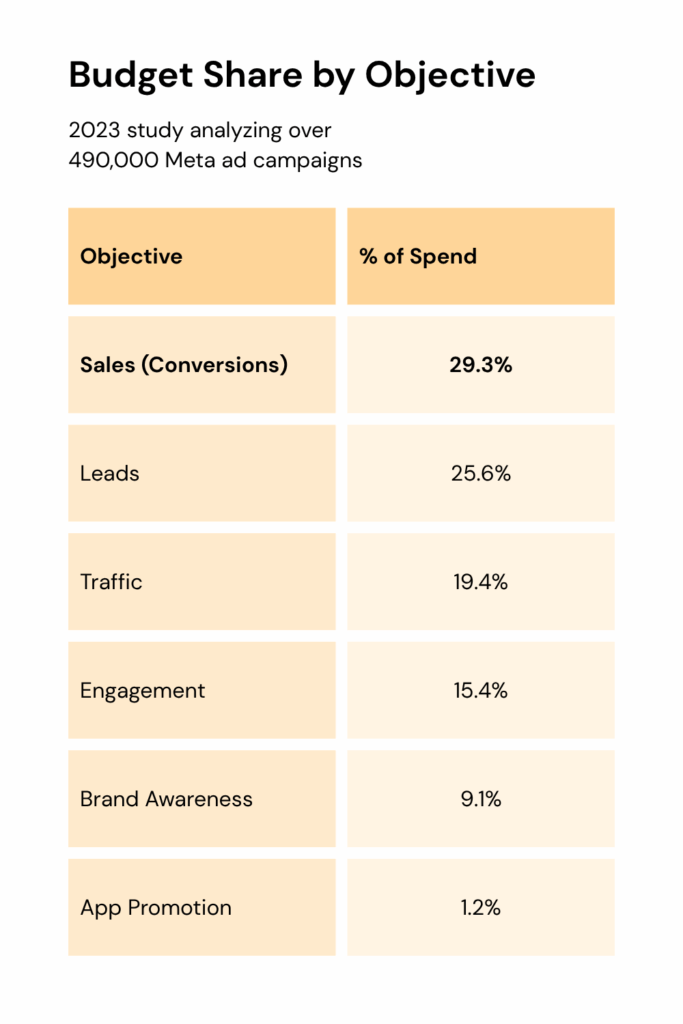
Know Your Business Goals
Before running any campaign, start with a simple question: What’s the outcome I care about?
If your goal is brand visibility, you might want to optimize for Awareness. If your goal is customer acquisition and revenue, you should focus on Sales. If you’re in the mobile app business, your goal is to drive installs.
Many advertisers make the mistake of choosing Traffic or Engagement thinking it will “warm up” their audience—but unless the algorithm is trained to optimize for conversions, you may not get the outcomes you want.
Best Ad Objective for Sales
If your goal is to drive purchases, the “Sales” objective is hands-down the best choice.
Why? Because Meta’s algorithm is designed to find people most likely to take action—whether that’s adding to cart, checking out, or completing a lead form (depending on how you configure the conversion event).
Sales Objective Benefits:
- Optimizes toward real conversion events, not vanity metrics
- Integrates with Pixel and Conversion API for deeper event learning
- Enables Advantage+ Shopping Campaigns and deeper budget automation
- Supports full-funnel targeting with dynamic creative and product catalogs
Meta has spent years fine-tuning this objective. If you’re running eCommerce, lead generation, or subscription-based offers, the Sales objective should be your default. This is hands down the most popular and powerful objective that all media buyers opt into.
How to Choose an Objective – With “Sales” as an Example
Here’s a quick step-by-step for setting up your campaign with the Sales objective:
- Start a new campaign and choose “Sales” as your goal
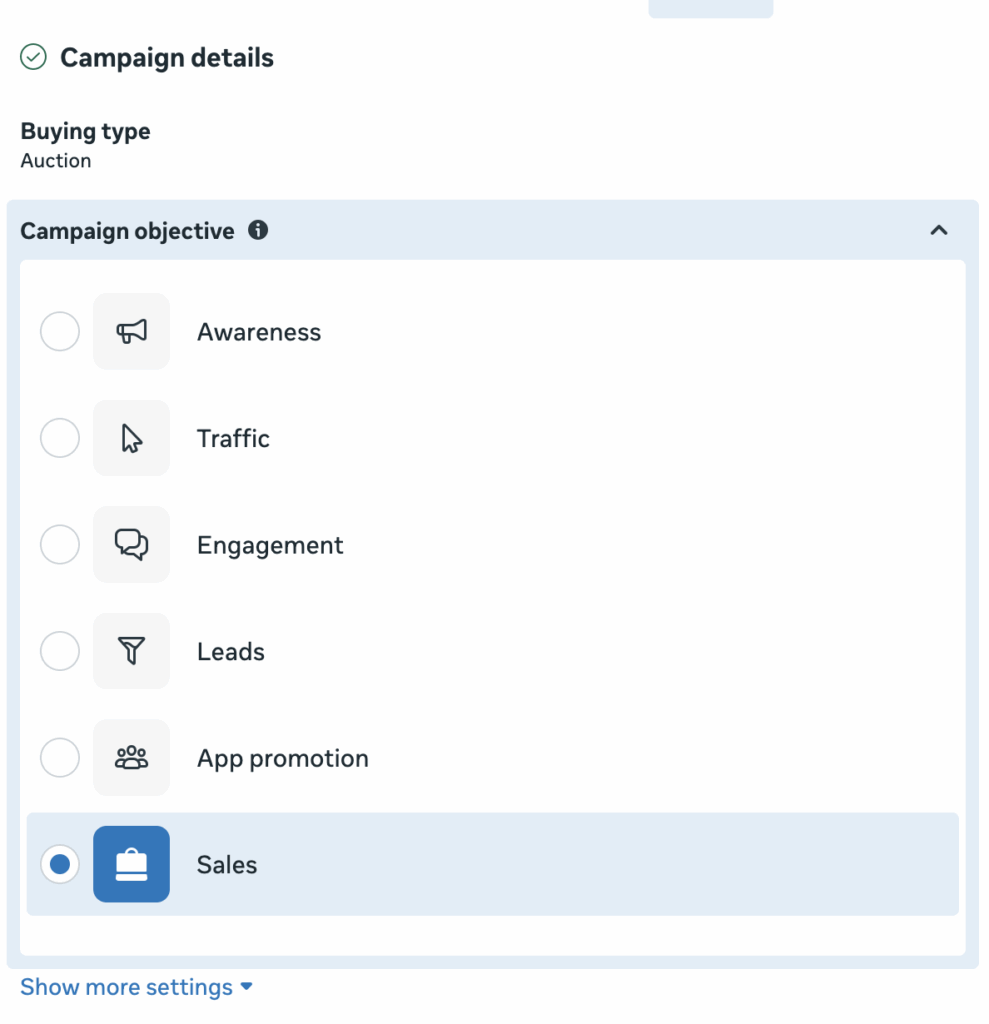
- Define your conversion event (e.g., Purchase, Add to Cart, Lead)
- Select your budget type – Advantage+ Shopping, CBO, or ABO
- Choose your audience targeting (broad, interest, or retargeting)
- Add creatives and placements
- Launch and let Meta optimize toward your sales outcome
🛠 Pro Tip: Don’t skip event setup. If Meta can’t track your sales actions, your campaign will underperform—even if you choose the right objective.
Importance of Event Tracking for Ads with Sales Goals
Optimizing for sales starts with tracking sales. Without proper event tracking, Meta has no feedback loop to optimize against.
There are two main tracking tools you need:
Meta Pixel
A browser-based JavaScript snippet that tracks key events like PageView, AddToCart, and Purchase. The Pixel sends this data back to Meta in real time.
Conversion API (CAPI)
A server-side method of sending event data directly from your backend. It works alongside the Pixel to create a more robust signal stream, especially post-iOS 14.
Why Both Matter: Combining Pixel + CAPI gives Meta a complete view of customer actions—both browser-side and server-side. This results in more reliable optimization and better attribution.
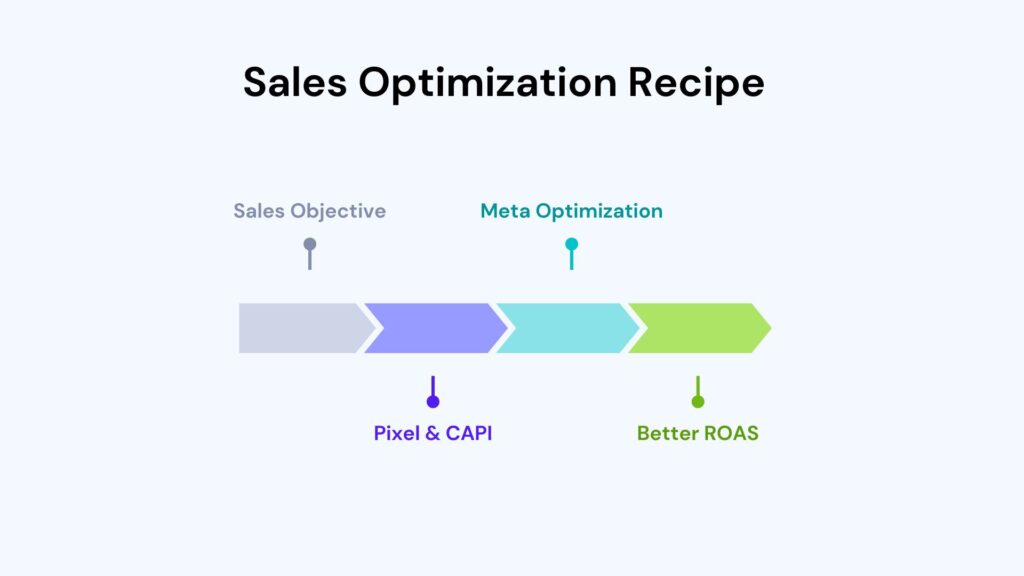
How Your Ad Budget Setup Determines Your Sales Success
Your campaign’s budget strategy plays a huge role in sales performance.
Here’s what to consider:
Sufficient Budget Matters
One of the most overlooked drivers of performance is simply having enough budget to let Meta’s machine learning do its job. Here’s what a “sufficient” budget really means:
- Enough budget to exit the learning phase. Meta requires around 50 optimization events (e.g., purchases, add-to-carts) within a 7-day window to properly train its algorithm. If your budget is too low to generate that volume, your campaign may stay stuck in the learning phase—leading to unstable results and poor efficiency.
- Enough budget to compete in the ad auction. Meta dynamically bids for impressions based on your objective, targeting, and budget. If your budget is too low, your bids may not be competitive enough to win high-quality impressions—especially those that convert. That means you could miss out on high-intent buyers simply because your ad wasn’t shown at the right time.
💡 Tip: If your campaign is struggling, it’s often not the creative or targeting—it’s that Meta doesn’t have enough data or budget headroom to optimize effectively.
CBO vs. ABO
- CBO (Campaign Budget Optimization) – When you want Meta to allocate budget dynamically across ad sets
- ABO (Ad Set Budget Optimization) – When you want manual control over how much each audience gets
Many advertisers start with ABO to test which audiences convert best, then move to CBO to scale efficiently.
The Link Between Ad Targeting and Sales Performance
Choosing the right audience is as important as the right objective. Despite the universal emphasis, broad targeting is not a one-size-fits-all approach.
Broad Targeting
Use broad targeting (no interests, just age/location) when:
- You have strong pixel data
- You’re using Advantage+ or a Sales campaign with lots of conversions
Broad allows Meta to find high-value buyers based on behavior—not just demographics.
Interest-Based Targeting
Use interest targeting when:
- You’re testing a new product
- You don’t have much conversion history yet
- You want to layer in buyer signals (e.g., tech lovers, outdoor enthusiasts)
Retargeting
Use retargeting when:
- Visitors didn’t convert the first time
- You want to re-engage with abandoned carts, video viewers, or page engagers
💡 Example: A typical sales funnel might look like:
- Prospecting (Broad or Interests) -> Add to Cart -> Retarget with urgency offer -> Conversion
Conclusion
Choosing the right Facebook ad objective isn’t just a technical detail—it’s a foundational decision that shapes your entire campaign strategy. If your goal is conversions, the Sales objective is your best ally.
But success doesn’t stop there. You’ll need:
- Accurate event tracking (Pixel + CAPI)
- Smart budgeting (CBO/ABO or Advantage+)
- Strategic targeting (broad, interest, retargeting)
When all of these elements align, you’re not just running ads—you’re building a conversion engine.
Whether you’re a founder, marketer, or growth strategist, mastering Facebook’s Sales objective is one of the most high-leverage skills you can build for paid acquisition. Stay tuned to our updates on Transcend Digital.


